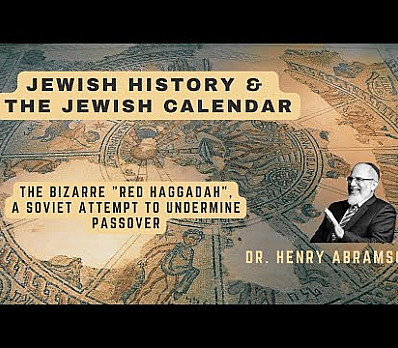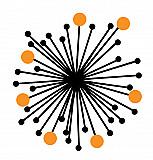Seder Plate
The Seder Plate
Karpas: Karpas represents the initial flourishing of the Israelites during the first years in Egypt. At the end of the biblical book of Genesis, Joseph moves his family to Egypt, where he becomes the second-in-command to Pharaoh. Protected by Joseph's exalted status, the family lives safely for several generations and proliferate greatly, becoming a great nation. The size of this growing population frightens the new Pharaoh, who enslaves the Israelites, lest they make war on Egypt. Even under slave conditions, the Israelites continue to reproduce, and Pharaoh eventually decrees that all baby boys be killed. In the course of the seder, we dip the karpas in salt water in order to taste both the hope of new birth and the tears that the Israelite slaves shed over their condition.
Haroset: This mix of fruits, wine or honey, and nuts symbolizes the mortar that the Israelite slaves used to construct buildings for Pharaoh. The name itself comes from the Hebrew word cheres or clay. Ashkenazi Jews generally include apples in haroset, a nod to the midrashic tradition that the Israelite women would go into the fields and seduce their husbands under the apple trees, in defiance of the Egyptian attempts to prevent reproduction by separating men and women.
Maror: This bitter herb allows us to taste the bitterness of slavery. Like life in Egypt, these lettuces and roots taste sweet when one first bites into them, but then become bitter as one eats more. We dip maror into haroset in order to associate the bitterness of slavery with the work that caused so much of this bitterness.
Z'roa: A roasted lamb shank bone that symbolizes the lamb that Jews sacrificed as the special Passover offering when the Temple stood in Jerusalem. The z'roa serves as a visual reminder of the sacrifice that the Israelites offered immediately before leaving Egypt and that Jews continued to offer until the destruction of the Temple. Vegetarians often substitute a roasted beet, both because the red of the beet resembles the blood of the sacrifice and because the Talmud mentions beets as one of the vegetables sometimes dipped during the seder.
Beitzah: A roasted egg that symbolizes the hagigah sacrifice, which would be offered on every holiday (including Passover) when the Temple stood. The roundness of the egg also represents the cycle of life--even in the most painful of times, there is always hope for a new beginning.
Olive: An olive on my Seder plate represents the oppression of Palestinians at the hands of the Israelie Government. It reminds us to ask: “How will we, as Jews, bear witness to the unjust actions committed in our name? Will these olives inspire us to be bearers of peace and hope for Palestinians — and for all who are oppressed?” (Forward, Put an Olive on the Seder Plate)
Orange: The orange reminds us of the presence of LGBTQ folks in our community, and the oppression they and all of us face within the strict gender and sexuality roles enforced in the name of our tradition.
Tomato: The tomato is a symbol of modern-day slavery, representing the migrant workers who suffer abuse at the hands of a consumer market that demands fruits and vegetables without regard for how the pickers are treated.
Lock and Key: We place the lock and key on our seder plate tonight to ally ourselves with those who are behind bars, with those who are labelled as felons in the community, and with the parents, children, and other family members of those who are locked up and locked out. The key represents our commitment, as Jews who know a history of oppression, to join the movement to end mass incarceration in the United States. The key reminds us of our potential to partner with the Source of Liberation to unlock a more promising, dignified future for us all.
Inspired to create
your own Haggadah?
Make your own Haggadah and share with other Seder lovers around the world
Have an idea
for a clip?
People like you bring their creativity to Haggadot.com when they share their ideas in a clip
Support Us
with your donation
Help us build moments of meaning and connection through
home-based Jewish rituals.
OUR TOP CONTRIBUTORS
Passover Guide
Hosting your first Passover Seder? Not sure what food to serve? Curious to
know more about the holiday? Explore our Passover 101 Guide for answers
to all of your questions.






















